Understanding Emergency Heat & Heat Pumps
Welcome to Miller's Heating & Air, your trusted partner for all your heating and cooling needs in Vancouver, WA. In this comprehensive blog post, we're going to unravel the mystery surrounding emergency heat in heat pump systems. Contrary to a common myth, emergency heat is not exclusive to gas furnaces. We will explore when and why a heat pump switches to emergency heat, the role of electric heat strips, and how understanding this process can help you save on energy bills and avoid unnecessary service calls.
Section 1: How a Heat Pump Works
Before we dive into emergency heat, let's get a solid understanding of how a heat pump operates. A heat pump is a versatile HVAC system that both heats and cools your home. It achieves this through a remarkable process of moving heat, rather than generating it.
In heating mode:
The heat pump extracts heat from the outdoor air, even in chilly weather.
It then moves this heat into your home, efficiently warming the indoor space.
This process is highly energy-efficient and can help reduce your heating bills compared to traditional systems like gas furnaces.
Section 2: Debunking the Myth
2.1 Myth: Emergency Heat is Exclusive to Gas Furnaces
One common misconception is that only gas furnaces have emergency heat. This is far from the truth. Heat pump systems are equipped with emergency heat functions, which often involve electric heat strips. Emergency heat is a crucial component of heat pump systems and serves as a backup heating source when needed.
2.2 Emergency Heat in Heat Pumps
Emergency heat in a heat pump system plays a similar role to auxiliary heating. It kicks in to provide extra heating power when the primary heating system, which is the heat pump itself, struggles to meet your home's heating demands. Here's how it works:
When the outdoor temperature drops significantly, the heat pump's efficiency decreases. There's less heat available in the cold air to extract.
At this point, the heat pump may have trouble maintaining your desired indoor temperature.
To ensure your home stays warm, the system switches to emergency heat. This typically involves the activation of electric heat strips, which generate additional heat.
While emergency heat is a valuable backup, it is not as energy-efficient as the heat pump's primary heating mode. Therefore, it should be used sparingly.
Section 3: When Does a Heat Pump Switch to Emergency Heat?
Understanding when your heat pump switches to emergency heat is essential for efficient operation and managing your energy bills. Several scenarios trigger the activation of emergency heat:
3.1 Extremely Cold Weather
Heat pumps are renowned for their ability to extract heat from the outdoor air, even in colder temperatures. However, there is a threshold where the temperature becomes too low for efficient operation. This threshold varies but is typically around 25 to 35 degrees Fahrenheit.
When the outdoor temperature drops below this point, the heat pump starts to struggle. It can't extract enough heat from the frigid air to adequately heat your home.
To compensate, the system may automatically switch to emergency heat. Electric heat strips are used to generate additional warmth, ensuring your indoor comfort.
3.2 Heat Pump Malfunctions or Repairs
Another situation that can lead to the activation of emergency heat is when your heat pump experiences a malfunction or requires repairs. When the primary heating component of the heat pump is compromised, such as a malfunctioning compressor or a refrigerant leak, the system may automatically switch to emergency heat to maintain your indoor comfort until the issue is resolved.
3.3 Manual Override
In some cases, you might choose to manually switch to emergency heat on your thermostat. This can be useful if you want to ensure your home remains warm during particularly cold weather or if you suspect an issue with your heat pump.
However, it's important to use this manual override feature judiciously. Relying on emergency heat for an extended period can lead to higher energy bills, as it is less efficient than the primary heating mode of the heat pump.
Section 4: Maximizing Heat Pump Efficiency
To minimize the need for emergency heat and keep your energy bills in check, consider implementing the following strategies to maximize your heat pump's efficiency:
4.1 Regular Maintenance
Schedule regular maintenance for your heat pump to ensure it operates optimally. Professional technicians can inspect and clean components, check refrigerant levels, and identify and address any issues promptly.
4.2 Insulation and Sealing
Proper insulation and sealing gaps in your home's envelope are essential for retaining heat. A well-insulated and sealed home requires less heating, reducing the reliance on emergency heat.
4.3 Programmable Thermostats
Invest in a programmable thermostat to maintain consistent indoor temperatures. Avoid making drastic adjustments, as this can cause the system to work harder and increase energy consumption.
4.4 Air Filter Maintenance
Regularly change your air filters to ensure proper airflow. A clogged filter can hinder the heat pump's efficiency, leading to higher energy bills.
Section 5: The Role of Air Conditioning
Heat pumps are unique in that they can function as both heating and cooling systems. During the cooling season, they extract heat from your home's interior and release it outside, effectively providing air conditioning. Understanding this dual functionality can help you make the most of your heat pump throughout the year.
Section 6: Summary
Emergency heat is a vital component of heat pump systems, ensuring your home stays warm during extreme cold weather or when your heat pump encounters issues. By understanding when and why your heat pump switches to emergency heat, you can make informed decisions that lead to efficient heating, lower energy bills, and fewer service calls.
For expert guidance on your heat pump system or any HVAC-related concerns, contact us at Miller's Heating & Air in Vancouver, WA. Our experienced technicians are here to provide top-notch service and help you make the most of your heating and cooling system year-round.


